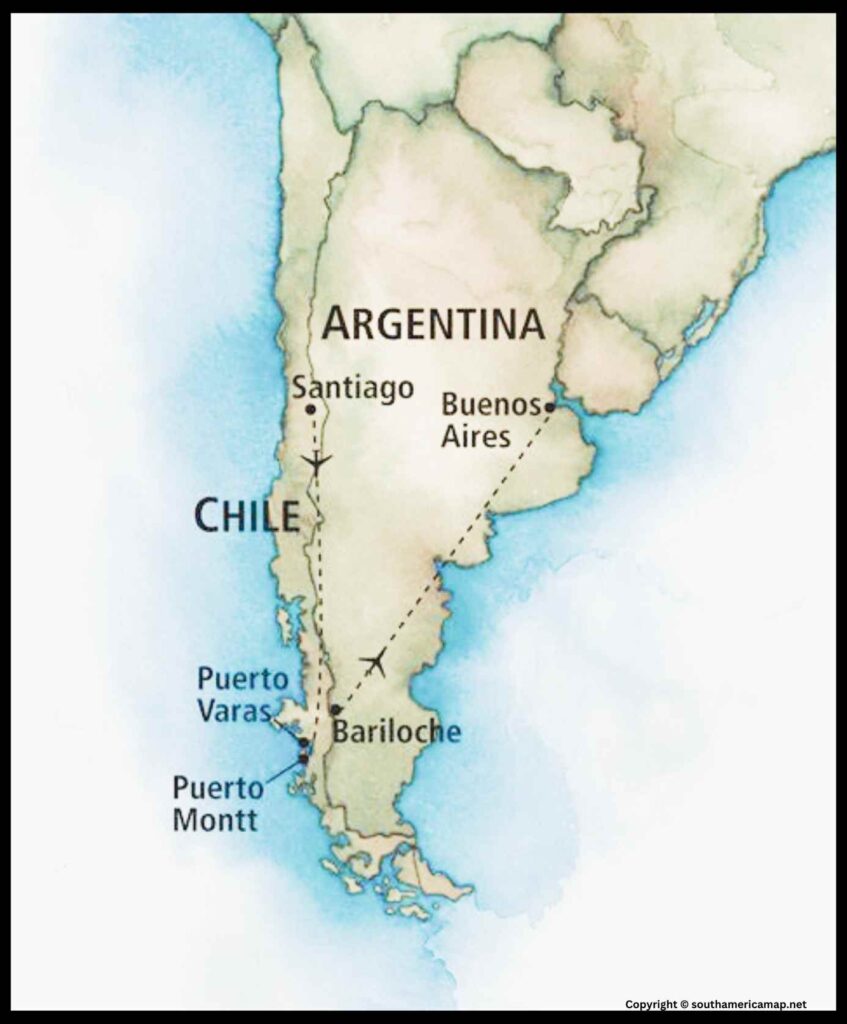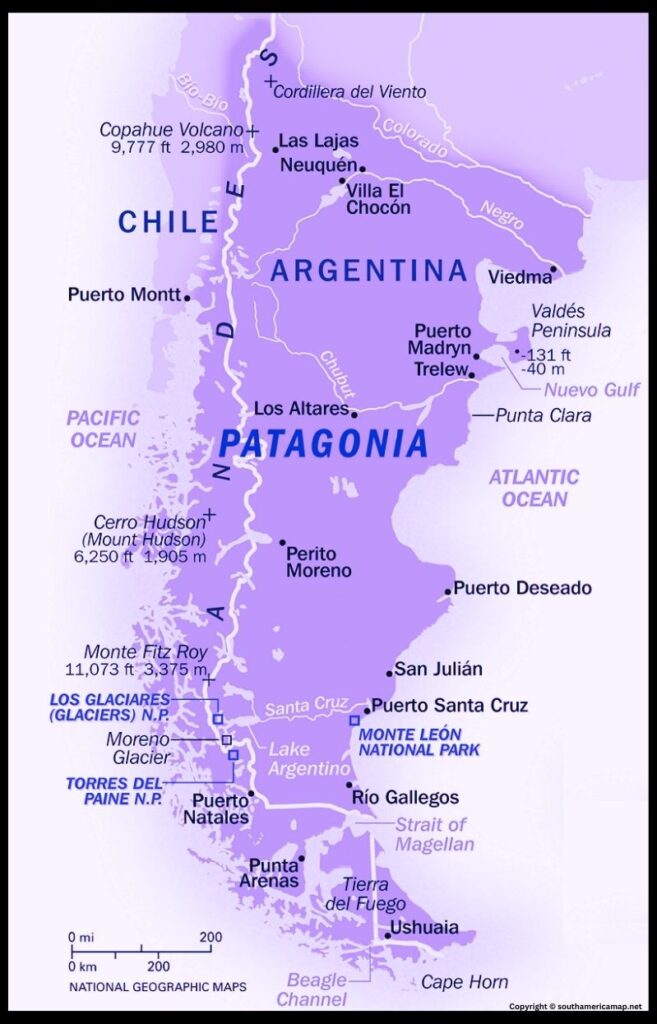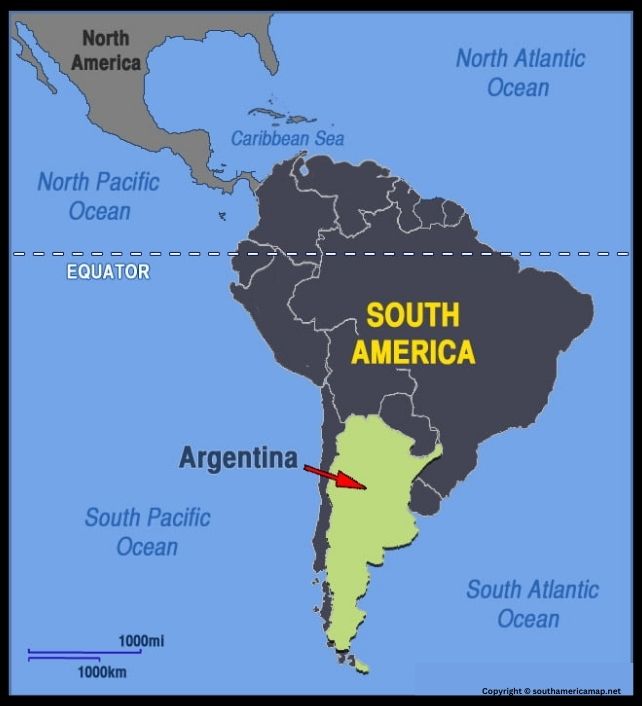Argentina South America Map – A labeled map of Argentina within South America offers a wealth of benefits, serving as a valuable tool for education, navigation, and cultural understanding.
Educationally, a labeled map aids in visualizing the country’s position within the continent, allowing individuals to:
- Grasp the geographical location: The map clarifies Argentina’s expansive size, showcasing its vast latitudinal range from subtropical north to subpolar south, and its diverse landscapes, encompassing the Andes Mountains, Pampas plains, and Patagonian plateau.
- Understand the relationships with neighboring countries: Visualizing the borders shared with Chile, Bolivia, Paraguay, Brazil, and Uruguay fosters a deeper understanding of Argentina’s geopolitical context and historical connections.
- Explore the diverse physical features: Labels on the map pinpoint significant features like the Andes Mountains, the Pampas plains, Tierra del Fuego, and the Patagonian plateau, igniting curiosity and encouraging exploration of Argentina’s breathtaking landscapes.
Related Post –
- South America Map with Capitals
- Physical Map
- North And South America Map
- Map of South America Countries
- Political Map
Argentina South America Map
For navigation purposes, a labeled map empowers individuals to:
- Plan travel routes: Whether embarking on a cultural adventure through Buenos Aires or a trekking expedition in the Andes, the map assists in plotting efficient routes, identifying key landmarks, and navigating unfamiliar terrain.
- Comprehend distances and transportation networks: Labels highlighting major cities, towns, highways, railways, and waterways facilitate planning travel itineraries and understanding the logistics of traversing the country.
- Locate specific destinations: Identifying cities, towns, national parks, and natural wonders on the map allows for effortless navigation and exploration of Argentina’s diverse offerings.
Culturally, a labeled map enriches understanding of Argentina by:
- Showcasing the diverse cultures and languages: Labels highlighting indigenous communities, historical sites, and cultural landmarks provide context for appreciating Argentina’s rich tapestry of ethnicities and traditions.
- Understanding the political and historical context: Labels marking historical sites, battlefields, and important cities contribute to comprehending the nation’s political history and cultural evolution.
- Appreciating the natural wonders: Labels identifying the Iguazu Falls, the Perito Moreno Glacier, and other natural wonders inspire awe and appreciation for Argentina’s unique ecosystems and biodiversity.
Location:
- South America: Argentina occupies the southernmost portion of the continent, occupying a significant portion of the Southern Cone region.
- Latitudinal range: Approximately 22°S to 58°S. This vast latitudinal range results in diverse climates, ranging from subtropical in the north to subpolar in the south.
- Longitudinal range: Approximately 53°W to 73°W. This wide longitudinal extent contributes to the country’s varied topography, encompassing the Andes Mountains in the west, the fertile Pampas plains in the east, and the Patagonian plateau in the south.
Boundaries:
Land borders:
- West: Chile, across the Andes Mountains.
- North: Bolivia and Paraguay.
- Northeast: Brazil.
- East: Uruguay.
Water borders:
- East: Atlantic Ocean, with a long coastline stretching approximately 2,900 miles.
- South: Drake Passage, separating Argentina from Antarctica.
Overall dimensions:
- Area: 2,780,400 square kilometers (1,073,518 square miles), making it the second-largest country in South America and the eighth-largest in the world.
- Length: Approximately 3,694 kilometers (2,295 miles) from north to south.
- Width: Approximately 1,423 kilometers (884 miles) from east to west.\
Argentina claims sovereignty over a portion of Antarctica, known as Argentine Antarctica, although this claim is not universally recognized. The country also includes several islands, such as Tierra del Fuego and the Falkland Islands (also known as Malvinas Islands), which are subject to territorial disputes.
Unique features:
- The prominent Andes Mountains form a natural border with Chile, creating stunning landscapes and harboring diverse ecosystems.
- The Pampas, fertile plains stretching across central Argentina, are crucial for agricultural production and contribute significantly to the nation’s economy.
- Patagonia, the southernmost region, is characterized by vast plains, glaciers, and breathtaking natural beauty.
Map of Chile And Argentina South America
Nestled along the western coast of South America, Chile stretches like a long, narrow ribbon for over 2,700 miles. This unique geography, sandwiched between the towering Andes Mountains and the vast Pacific Ocean, grants Chile breathtaking landscapes and diverse ecosystems. From the arid Atacama Desert in the north to the icy fjords of Patagonia in the south, Chile’s location plays a significant role in shaping its natural beauty, cultural identity, and economic potential.
Map of Patagonia Argentina South America
Nestled in the southernmost reaches of South America, Patagonia sprawls across a vast territory encompassing the southern tip of mainland Argentina and portions of neighboring Chile. This awe-inspiring region stretches from the windswept plains of southern Mendoza and Neuquen provinces in Argentina, south along the Andes Mountains, eventually splitting into two distinct sections: the Argentinian Patagonia, known for its glacial lakes, arid steppes, and dramatic coastline, and Chilean Patagonia, characterized by lush forests, rugged fjords, and towering mountains.
Patagonia’s geographic boundaries are loosely defined, generally considered to span from the 35th to 56th parallel south, encompassing a diverse range of landscapes, from the arid plateaus of the Patagonian Plateau to the icy peaks of the Andes and the fertile valleys of the Rio Negro and Chubut rivers.
This remote and captivating region offers a unique blend of natural beauty and cultural heritage, attracting visitors from around the world to explore its hidden wonders and experience its breathtaking scenery.
In conclusion, a labeled map of Argentina within South America unlocks a world of educational, navigational, and cultural benefits. It serves as a key resource for comprehending the country’s geography, history, and culture, while also facilitating exploration and travel within its vast and diverse landscapes.


